The 1851 Census, taken on 30th March, showed a total of 91 people living on the Island up from 56 in 1841. 63 were military personnel on the Island up from the 26 a decade earlier in 1841. The Infantry detachment, this time from the 4th (King’s Own) Regiment of Foot, consisted of 1 Officer, 1 SNCO, 1 JNCO and 19 Infantrymen so just two soldiers less than previously. A Master Gunner who also acted as the Barrack Sergeant assisted by an Invalid Gunner provided the permanent Island Artillery presence and there was still a civilian Canteen Manager or Lessee. The increase in numbers came from a regular detachment from the Royal Artillery consisting of 1 Officer, 1 Sergeant, 5 JNCO’s and 32 Gunners.

There were 10 families on the Island, the same as in 1841. Whether this is coincidence or that there were just 10 married quarters available I’m not sure but there were some married soldiers that were unaccompanied on the Island. In any case two families were from the detachment of the 4th, five from the Gunner detachment as well as the Master Gunner’s and Invalid Gunner’s families and the Canteen Lessee family. There were four boys and thirteen girls on the Island. The Census provided a bit more detail than previously. Individuals provided their place of birth not just the country. This makes it easier to find out where the families soldiers and their settled after they were discharged and although I haven’t been able to trace all the soldiers, names like Smith are too widespread to be sure if you have found the right one, those I am reasonably certain about I have provided some detail in below for anyone looking for a link to the Island however please note places were in their original counties so Woolwich would be in Kent rather than London.

The year before the census had been quite a colourful one on the Island. The 4th had taken over from the 82nd Regiment of Foot in April of 1850. The Regiment was based in the Citadel and the detachment on the Island was commanded by Captain Josiah Hort. There was something of a scandal when Lt Arthur Harris accused other officers, including the Artillery Commander (a Lieutenant), of bullying and Captain Hort of being complicit in allowing it to happen. It all escalated quickly as placards signed by Harris’s father defaming Hort appeared around Plymouth. Harris admitted to distributing them which eventually led to his Court Martial and dismissal for defamation and ignoring the Chain of Command. Hort’s father also got involved and accusations of cowardice and bullying were thrown by both sides. Harris senior was eventually jailed for libel and by the time of the Census all the officers involved were posted away from the Island. A few months later the Master Gunner David Edmunds and Canteen Lessee, Mr Couch were also replaced as they had been the masterminds behind the 1850 Brandy Smuggling debacle. The pair had arranged to smuggle some 250 barrels of brandy from a French Merchantmen onto the Island, not declare it to customs and sell it on for a profit. Presumably they arranged to do it when the Officers were on the mainland but they were however foiled by the Customs Officers and by the time of the Census Master Gunner Edmonds was in jail and Mr Couch on the run.

The 4th (King’s Own) Regiment of Foot detachment on the Island during the census on 30th March 1851 were commanded by Captain George Kennedy who had Colour Sergeant Russells, Corporal Hunt and 19 Privates under his Command. The 4th were originally raised in 1860 for service in the Tangier Garrison by Charles Trelawney who coincidentally had been Governor of Plymouth and St Nicholas Island from 1896 to 1722. The Regiment was raised equally in London and the West Country. Originally named the 2nd Tangier Regiment it was renamed a few times before becoming known as the 4th (King’s Own) in 1751. Subsequent Army Reforms saw it amalgamated and become part of the King’s Own (Royal Lancaster) Regiment in 1881, King’s Own Royal Regiment (1921), King’s Own Royal Border Regiment (1959) and is currently part of the Duke of Lancaster’s Regiment. The detachment were pretty much evenly split with a Scot commanding11 Irishmen and 10 Englishmen. Most of the English came from the South West predominantly Devon and Somerset. The detachment is listed below
Captain George Kennedy, age 34, Unmarried from Peebles, Peeblesshire, Scotland.
Colour Sergeant John Russells, 35, Married, Enniscorthy, Wexford, Ireland.
Corporal Joseph Hunt, 32, Unmarried, Romansleigh, Devon.
Private William Ashley, 29, Unmarried, Dundry, Somerset.
Private John Barker, 30, Unmarried, Lancaster.
Private James Bow, 36, Unmarried, Maryborough, Queens County, Leinster, Ireland.
Private Michael Burke, 22, Unmarried, Templemore, Tipperary, Ireland.
Private James Connor, 25, Unmarried, Claremorris, Mayo, Ireland.
Private Thomas Gordon, 33, Unmarried, Dublin, Ireland.
Private Henry Havers, 18, Unmarried, Plymouth, Devon.
Private Martin Higgins, 22, Unmarried, Kiltullagh, Roscommon, Ireland.
Private William Kearney, 31, Unmarried, Dublin, Ireland.
Private John McGee, 29, Unmarried, Newry, Down, Ireland.
Private William Moore, 30, Married, Rathfriland, Down, Ireland
Private James Newth, 31, Unmarried, Dursley, Gloucestershire.
Private Robert Norris, 33, Unmarried, Doughal, Cork, Ireland.
Private Frederick Powell, 27, Unmarried Bristol, Gloucestershire.
Private William Skinner, 35, Unmarried, Exmouth, Devon.
Private James Smith, 26, Unmarried, Killanure, Cavan. Ireland.
Private James Stewart, 20, Unmarried, Kirkby Stephen, Westmorland.
Private Robert Taylor, 33, Unmarried, Bristol, Somerset.
Private John Wingate, 20, Unmarried, Portsmouth, Hampshire.
Colour Sergeant Russells and Private Moore were both accompanied by their families and living in Married Quarters although would be no more than a room per family.
Colour Sergeant John Russells, 35, Married, Enniscorthy, Wexford, Ireland.
Mary Ann Russells, 33, Married, Dublin, Ireland.
John Russells, 2 ½, Winchester, Hampshire.
Ann Russells, 3 months, Devonport, Devon
Catherine Bourk, 13, Servant, Dundrum, Tipperary.
Private William Moore, 30, Married, Rathfriland, Down, Ireland
Fanny Moore, 19, Married, Winchester, Hampshire.
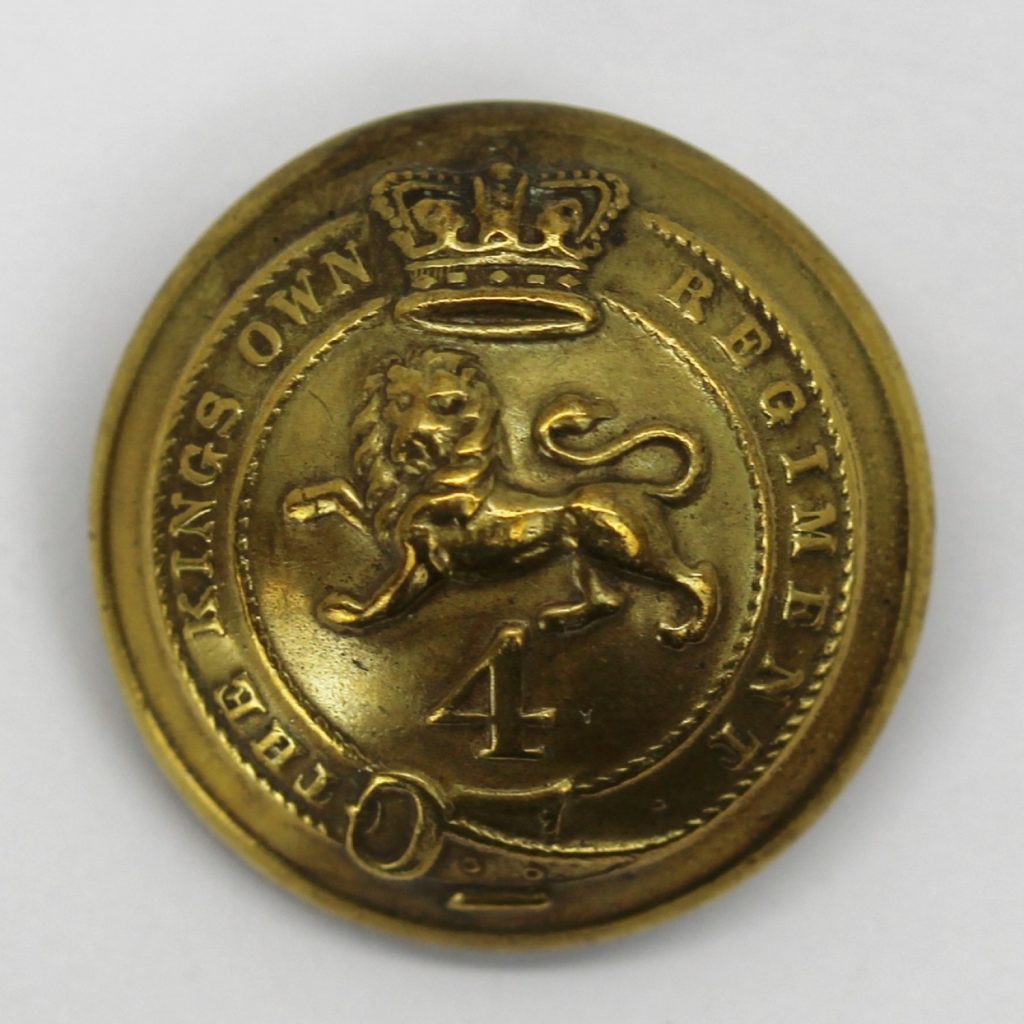
Captain George Kennedy was still serving in 1854 with the Regiment in the Crimea having been promoted to Major. Colour Sergeant John Russells moved back to Ireland and was on the records as being pensioned in Dublin. Corporal Joseph Hunt was discharged in 1861 by which time he had been promoted to Sergeant. He was married by then, to Harriet, Joseph was employed as an accountant and he with Harriet settled in Clerkenwell in the East End of London where they were recorded in the 1871 Census.
Private James Bow was discharged as medically unfit a few years after the census in 1853 after 22 years service. It appears he was a bit of a character having been imprisoned 3 times during his service though his record doesn’t indicate the offences; Indifferent was the word used to describe his conduct on discharge. He had served in New South Wales and the East Indies, including Madras before initially settling in Stockport after discharge before moving back to Kilkenny in Ireland.
On the other hand Private Frederick Powell did progress through the ranks and after enlisting in 1842 at Bristol was promoted to Corporal in 1853 and Sergeant in 1855 before being discharged as medically unfit in 1856. He had married Matilda and they settled back in Bristol with their two daughters where Frederick was working for the Customs Office as an Extra Tide Waiter. Essentially a Tide Waiter boarded ships to check their cargoes to determine and collect any customs due. By the 1871 Census Frederick had retired but Martha was making some coin by painting pottery. A son, Frederick had been born in 1863. Unfortunately Frederick Senior passed away in Bristol during 1873.
Private Thomas Gordon was discharged in 1860 having enlisted in 1838. His conduct was described as good despite having been Court Martialled and imprisoned twice and having been promoted three times to Corporal and reduced back to Private shortly afterwards. The final time he was promoted he only managed to hold onto the rank for 3 days before being reduced back to Private. He appears to have moved back to Ireland on discharge.
Of the rest Private William Skinner is shown on the Army Pension records as having been discharged in 1856 and collecting his pension in Plymouth until 1867. The pension records also show Private Robert Norris was discharged in 1854 and moved around the West Country collecting his pension at Bath, Salisbury and Dorchester. The 1871 Census shows him married to Mary Ann and living in Somerset before passing in 1876.
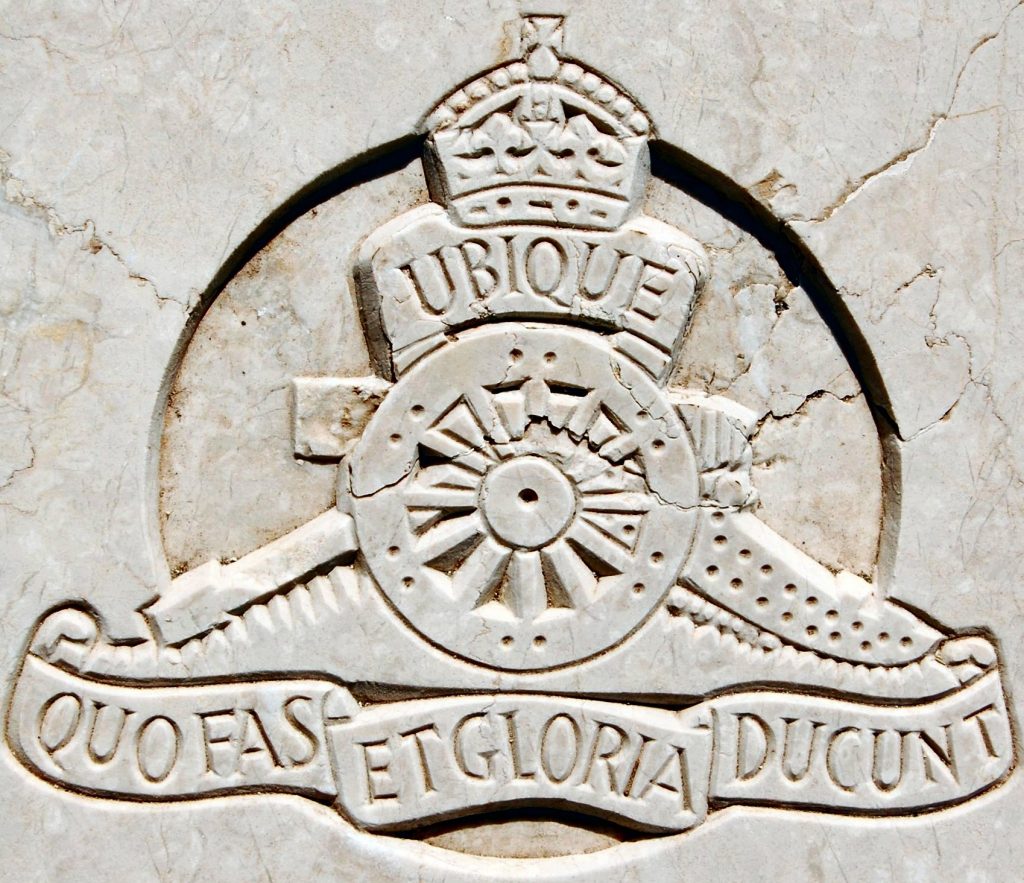
The Royal Artillery detachment was commanded by Lt Henry Talbot whose NCO’s were Sergeant Robert Thomas, Corporal Farist, two Bombardiers and two Acting Bombardiers with 32 Gunner/Drivers. The rank of Driver referred to the Driver of the horse teams that pulled the Artillery until the end of World War I when the rank was dropped as the Artillery became motorised. It’s worth noting that Corporal was a rank at that time in the Royal Artillery and was senior to a Bombardier. At the time the next full non commissioned rank to Corporal in the Engineers was Second Corporal and Bombardier was the equivalent rank in the Artillery. Lance Corporal and its Artillery equivalent of Acting Bombardier were not full ranks at this stage. In 1920 the Royal Artillery did away the rank of Corporal and replaced it with Bombardier. At the time the Royal Artillery was organised into Companies and Battalions. The Gunners are recorded as being either from the 7th Company, 11th Battalion or 1st Company, 12th Battalion meaning the detachment was drawn from both units or they were rotating at the time of the census. There was also the Master Gunner John Blain who doubled up as the Barrack Sergeant and his assistant an Invalid Gunner both were held on a separate strength to the main Artillery detachment. Corps such as the Engineers and Artillery recruited from across the United Kingdom and it’s Dominions. The Gunner detachment consisted of 22 Englishmen, 9 Scots, 7 Irishmen, a Welshman and a Canadian. The Gunners are listed below
Lieutenant Henry L Talbot, 21, Unmarried, Woolwich, Kent.
Sergeant Robert Thomas, 35, Married, Woolwich, Kent.
Corporal George Farist, 29, Unmarried, Sheffield, Yorkshire.
Bombardier John Wallace, 21, Unmarried, Kirknewton, West Lothian, Scotland.
Bombardier Walter Flockhart, 28, Unmarried, Edinburgh, Scotland.
A/Bombardier Henry Pickering, 23, Sheriff Hutton, Yorkshire.
A/Bombardier Richard Routledge, 19, Unmarried, Carlisle, Cumberland.
Gunner/Driver John Sinclair, 22, Unmarried, Wick, Caithness, Scotland.
Gunner/Driver Henry Webber, 21. Married, Taunton, Somerset.
Gunner/Driver George Dimond, 20, Unmarried, Buckland St Mary, Somerset.
Gunner/Driver Collin Kempt, 22, Unmarried, Saltburn, Ross shire, Scotland.
Gunner/Driver Edward Wordsworth, 23, Unmarried, Daventry, Northamptonshire.
Gunner/Driver William Gratrix, 24, Unmarried. Manchester, Lancashire.
Gunner/Driver Thomas Walsh, 20, Unmarried, Ilminster, Somerset.
Gunner/Driver Lancelot Grimes, 20 Unmarried, Thoursby, Cumberland.
Gunner/Driver Thomas Shellock, 20, Unmarried, West Mersea, Essex.
Gunner/Driver William Pounsey, 19, Unmarried, Darlington, Durham.
Gunner/Driver Robert Flemming, 24, Unmarried, Cockermouth, Cumberland.
Gunner/Driver James Carey, 24, Unmarried, Croydon, Surrey.
Gunner/Driver Richard Kennedy, 20, Unmarried. Tyrone, Ireland.
Gunner/Driver Frederick Adams, 21, Unmarried, Yeovil, Somerset.
Gunner/Driver Henry Deery, 21, Unmarried, Glendown.
Gunner/Driver Thomas Knight, 23, Unmarried, Islip, Northamptonshire.
Gunner/Driver Walter Walsh, 35, Married, Lainsborough, Roscommon, Ireland.
Gunner/Driver John Smith, 21, Unmarried, Durham.
Gunner/Driver Michael Brennan, 21, Unmarried, Fermanagh, Donegal, Ireland.
Gunner/Driver Richard McPeak, 22, Unmarried, Penarth, Wales.
Gunner/Driver Joseph Glass, 23, Married, Quebec, Canada (British Subject)
Gunner/Driver Christopher Donnely, 21, Unmarried, Enniskillen, Fermanagh, Ireland
Gunner/Driver Robert Clark, 22, Unmarried, Tyrone, Ireland.
Gunner/Driver William Saunders, 21, Unmarried, Cullen, Banffshire, Scotland
Gunner/Driver Nicholas Sinclair, 22, Unmarried, Shetland, Scotland.
Gunner/Driver Robert Muir, 22, Unmarried, Leslie, Fife, Scotland.
Gunner/Driver John Murray, 25, Unmarried, Cavan, Ireland.
Gunner/Driver Edward McBride, 20, Unmarried, Devon.
Gunner/Driver Benjamin Ellis, 22, Unmarried, Rothwell, Yorkshire
Gunner/Driver William Youson, 22, Unmarried, Leicester.
Gunner/Driver John Wood, 36, Married, Hartford, Cheshire.
Gunner/Driver John Ballentyne, 37, Married, Leith, Scotland.
The five Gunner families are as follows
Sergeant Robert Thomas, 35, Married, Woolwich, Kent.
Ellen Thomas. 25. Married, Limerick, Ireland.
Robert Thomas, 1, Woolwich, Kent.
Gunner/Driver Walter Walsh, 35, Married, Lainsborough, Roscommon, Ireland.
Johanna Welsh, 31, Married, Malta, (British Subject)
Mariah Welsh, 10. Scholar, Leith, Scotland.
Harriet Welsh, 7, Scholar, Woolwich, Kent.
Johanna Welsh, 3, Leith, Scotland.
James Welsh, 1, Woolwich, Kent.
Gunner/Driver John Wood, 36, Married, Hartford, Cheshire.
Sarah Wood, 29, Married, Montreal, Canada (British Subject).
Ann Wood, 3, Plumstead, Kent.
Amelia Wood, 1, Devonport, Devon.
Gunner/Driver John Ballentyne, 37, Married, Leith, Scotland.
Margaret Ballentyne, 38, Married, Heddington, Wiltshire.
James Ballentyne, 9, Scholar, Dublin, Ireland.
Elizabeth Ballentyne, 8, Scholar, Dublin, Ireland.
Gunner/Driver Henry Webber, 21. Married, Taunton, Somerset.
Louisa Webber, 21, Married, Taunton, Somerset.
Louisa Webber, 1 month, Maker, Devon.
Lt Henry Lynch Talbot was the son of Captain Lynch Talbot and followed his father into the Royal Artillery. He enlisted as an 18 year old in 1846 and served abroad in Bermuda and India where he was awarded the India Medal with clasps for Lucknow. He progressed through the ranks making Lieutenant Colonel by 1867 before being pensioned in 1876. By then he had married Henrietta in 1856 and had 6 children, Ada, Henry, Frederick, John, Ethel and Lucy. Unfortunately a 7th child, Blanche died a year after being born. The family settled in Halifax, Novia Scotia in Canada. Henry passed a couple of years later in 1878.
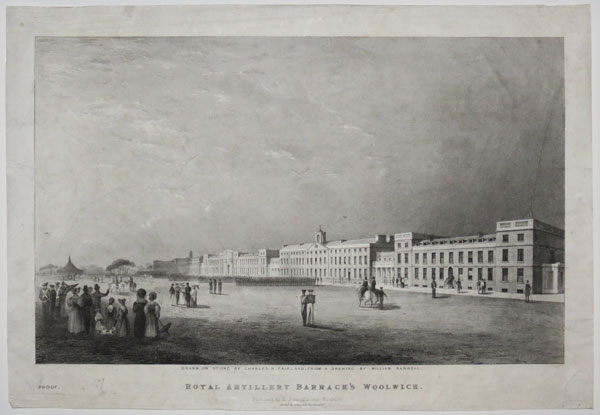
Sgt Robert Thomas enlisted in 1829 aged 13 as a Trumpeter. Born in Woolwich his father quite possibly served in the Artillery, Woolwich being home to the Royal Artillery Depot. He saw service in Gibraltar and Barbados before he was discharged in 1854 as medically unfit. He and his wife, had another 4 children, Mary, Ellen, Julia and Arthur making 5 in all. The family settled in Ipswich after Robert was discharged and ran the Dove Inn in St Helen’s Street which is still a pub today.
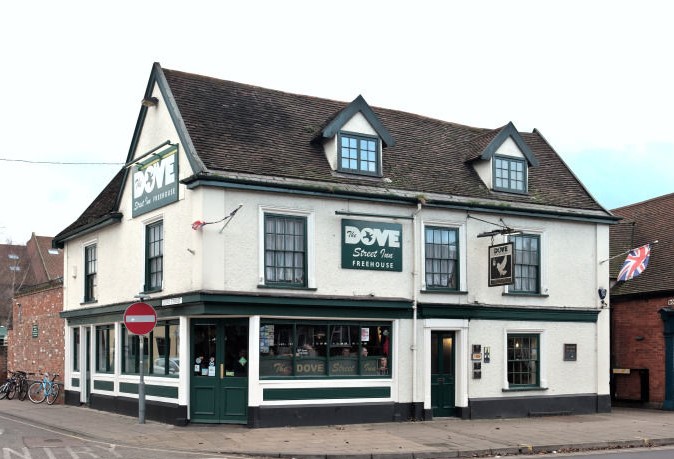
Bombardier John Wallace had a good career making it to Sergeant Major before being discharged at his own request in 1871. He had served abroad in the Crimea and China and was awarded medals for Distinguished Service in the Field, Crimea with clasps for Sebastopol and Inkerman) as well as the Turkish War Medal issued by the Ottoman Empire to Allied soldiers in the Crimea whilst with the Artillery. He transferred to the Commissariat Corps in 1859 as a Sergeant but had to take a reduction in rank to 2nd Corporal but was quickly promoted through the ranks and was a Sergeant Major and 1st Class Clerk by 1866. He was transferred to the Army Service Corps on their formation in 1870. Unfortunately I can’t trace John after he was discharged, it is quite possible he emigrated but John Wallace is a very common name.

The other Bombardier, Walter Flockhart also made it to Sergeant Major but stayed with the Royal Artillery. He married Isabella in Lewisham, London during 1853. Isabella was from Woolwich where the Royal Artillery Depot Barracks are and Lewisham is literally just down the road so it seems Walter was posted there by the time they were married. The 1861 census shows him at Woolwich living with his family which by then included daughters Jessie, Mary and Elizabeth. Mary was born in Nottingham in 1858 suggesting the family may have been briefly posted there before returning to Woolwich where Elizabeth was born in 1860. A son, James, was born in 1864 and Walter appears to have passed away, possibly while serving before the next census as Isabella is shown in 1871 as a widow living in Plumstead (again just down the road from Woolwich) and working as a Needlewoman. Military financial records show an Isabella Flockhart getting work as a needlewoman at the Artillery Barracks in Woolwich up until 1889. Isabella then moved up to Greenock, Scotland with James and Elizabeth where James is shown working as a clerk.
At 16 years old Richard Routledge enlisted in 1848, an Acting Bombardier on the Island he was a Corporal when he was discharged in 1854 as medically unfit. He married a local Devonian from Kingsand, Mary Ann before he was discharged. Although Kingsand was in Cornwall after the boundary changes in 1844 when Mary was born it was in Devon. The pair went to Northampton immediately after Richard was discharged where he joined the Northampton Militia as a full time reservist. They relocated back to Devon within a few months and Richard transferred to the Devon Artillery Militia. By the time of the 1861 Census Richard was still a full time reservist and had been promoted to Colour Sergeant, a rank associated with the Quartermasters or Stores. The family, now including William, John, Mary, Emily and Eliza was in Militia married quarters in Devonport. They were still there in 1871. Richard was now a Battery Sergeant Major and the family had continued to grow with Annie, Frederick, Maude, Rosina and Charles added to the brood making 10 children in total!! John, the second eldest is shown as having joined the Royal Navy as a Boy Sailor and was on leave from the training ship HMS Impregnable. But the family continued to grow. The 1881 census shows Richard now 49 is still a Sergeant Major but another two children have been born, Albert and Lillian making a grand total of 12 of whom 9 are still at home in Devonport. Emily is working as an Upholsteress, Annie is teaching, Frederick is a Plumbers Apprentice, Maud is a Milliners Apprentice and the rest are scholars apart from Eliza who is not working. Richard passed away in 1889 but Mary Anne is still living in Devonport during the 1991 census with 4 of the children. Frederick now 27 is a Painter, Rosina is helping at home, Charles is a Caulker and Lilian a scholar. Sometime before the 1901 census Mary Anne moved in with her daughter Maud who had married George Mounstephen a railway clerk with Great Western Railway and Maud’s two children Hilda and Winifred at 111 Wilton Street, Devonport. They are still together 1911 and living at 7 Alma Road, Devonport. George had been promoted to Chief Railway Clerk, Hilda had left home but Winifred was still there with a younger brother George. Mary Anne eventually passed away at the grand age of 84 in 1916 still in Devonport. Most of the family stayed in the Plymouth area and I will do a separate blog on what happened to them especially as not only was the family large but a couple of the children had large families as well.
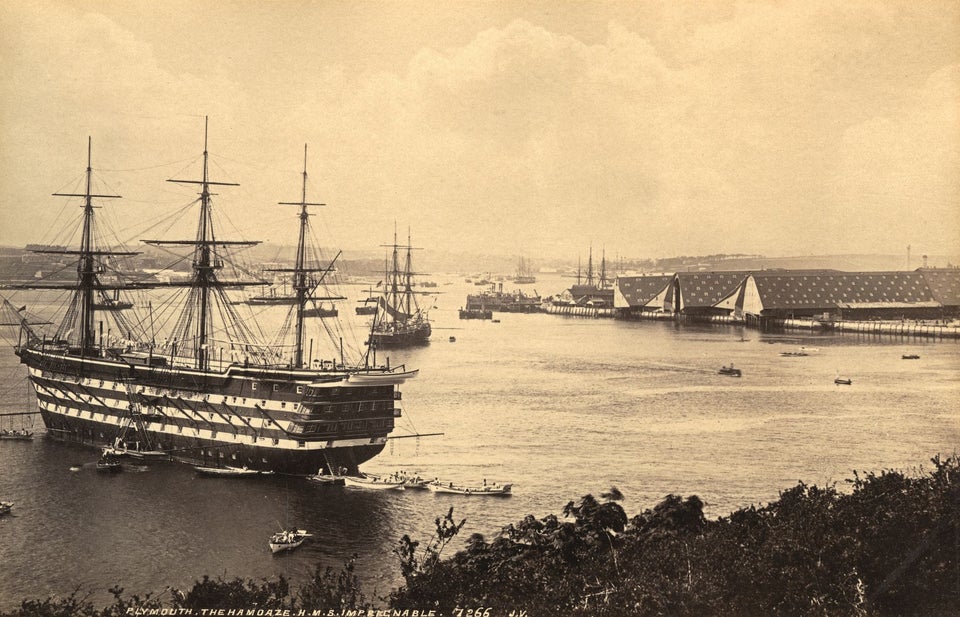
Gunner/Driver John Sinclair was discharged as medically unfit after nearly 8 years service in 1855. He was imprisoned once after attacking and cutting a Gunner with a clasp knife early in his career. He moved back to Scotland with his parents after leaving the Artillery and found work as an Auctioneers Clerk initially in Wick where he married Elizabeth in 1858. They had 4 children, Adam, John, George and Elizabeth but by the time of the 1871 census he was a Widower living near Edinburgh. Elizabeth seems to have passed around the time baby Elizabeth was born and John is living with his 4 children and a lady called Dolina McAdie who he had married by the 1881 census. They had their own child, Dolina and the other 4 were still living with them in 1881. Adam was a Wood Brokers Clerk and John a Bankers Clerk whilst the other two were at school. Both John and Dolina seem to have passed by the 1891 Census.
Gunner/Driver Henry Webber enlisted in 1849 and reached the rank of Corporal before being discharged in 1869 at his own request. He had a bit of a mixed career having been up and down the ranks a couple of times and serving one spell in prison for desertion. He saw a bit of the world having served abroad in Ceylon (now Sri Lanka), China, Malta and British North America (Canada). The records show he intended to live in Woolwich after leaving but there is no record of him doing so.
Gunner/Driver Collin Kempt had a good career. He went on to reach the rank of Master Gunner 3rd Class in 1865 before being discharged in 1870 after completing his engagement after 22 years service including abroad in Malta and Corfu. He married Jane Menzies in 1871 and were living in Inverness.
Gunner/Driver Thomas Shellock ended up as a Sergeant before requesting his own discharge in 1870 having served 22 years including in the Crimea. The 1861 census shows him still unmarried living in Barracks in Woolwich. He initially moved to Essex with his wife Elizabeth after leaving the Army and his pension record shows him moving around the country collecting it at Ipswich, Glasgow and Londonderry in 1875 when he disappears from the record.
Gunner/Driver Frederick Adams reached the rank of Corporal before his discharge in 1870 due to the reduction in the size of the Army. He served abroad in India and the Crimea where he took part in a number of major engagements. His Crimean Medal had clasps for Alma, Balaklava, Inkerman and Sebastopol where he was wounded to the head in 1855 at Sebastopol. In common with most soldiers he was busted down to Gunner once after going AWOL but was promoted back to Corporal within 4 years. Fred settled in London to work as a glove cutter after leaving. In 1871 he was living with his wife Elizabeth, two daughters and son in Battersea and two more sons had arrived by the 1881 census with the family still in Battersea and Frederick still employed as a Glover. Ten years later Frederick is now working as a Club Manager but he may have been unwell as in 1893 he is admitted as an In-Pensioner in the Royal Hospital, Chelsea. However he refuses to stay unless Elizabeth is provided for, In-Pensioners have to give up their pension as part of the admittance process but don’t pay any board or lodgings at the Hospital. It seems an arrangement for Elizabeth couldn’t be made and Frederick goes back to living with Elizabeth in Poplar East London where they are still living in 1901.

The Canadian, Joseph Glass who was married but unaccompanied on the Island initially enlisted in 31st Regiment of Foot but transferred after less than a year to the Artillery. He never got promoted from Gunner/Driver and was discharged in 1857 as medically unfit. He settled in East London with his wife Mary Ann and 7 children living off his pension that was augmented with a small medical pension. Unfortunately Joseph passed away in 1863.
Having enlisted in 1848 William Saunders was discharged as a Battery Sergeant Major in 1868 having completed his terms of engagement. He had also seen active service in the Crimea having the Sebastopol clasp to his Crimean Medal. He had joined the Argyll and Bute Militia by 1871 and was living in Campbelltown. He was still there earning a living as a Club Manager in 1901 and was drawing his pension until 1904 around which time he seems to have passed away.
William Youson enlisted in 1847 and was discharged at his own request in 1868 having reached the rank of Sergeant. Another who served in the Crimea and earnt the Inkerman and Sebastopol clasps he also served in the East Indies, Corfu. Malta and Canada. He married Elizabeth Hanna in 1856 whilst posted to Woolwich but was back in Devonport in 1861. William died in Soham in 1899.
Of the rest I can find little information. Edward Wordsworth died in Fyzabad, India in 1858. In the same year Richard McPeak drowned in Bombay. William Pounsey was awarded the Indian Mutiny Medal with clasp for Lucknow but that is the only record of him. Robert Fleming was last heard of still serving as a Gunner at Hurst Castle in 1861. Henry Deery appears on a passenger list for San Francisco in 1860.
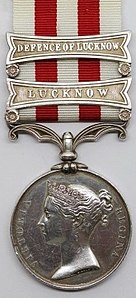
The Garrison was completed by the Barrack Sergeant and Master Gunner John Blain and his assistant Invalid Gunner James Johnston
Permanent Garrison Posts
Master Gunner and Barrack Sergeant
Master Gunner John Blain, 38, Married, Newtown Stewart, Wigtownshire, Scotland.
Ann Blain, 36, Married, Perth, Perthshire, Scotland.
Christina Blain, 6 months, Perth, Perthshire.
Helen Simpson, 13, Niece, Perth, Perthshire.
John was promoted from Sergeant in 1850 whether this was so he could replace the convicted brandy smuggler Master Gunner Dave Edmunds I’m not sure but it was just after Edmunds was arrested. He was discharged a year later as unfit for service after a brief spell in hospital for mental derangement aggravated by intemperate habits which seems to be a way of saying he liked a drink a bit too much for his own good. He had served abroad in both the West Indies and China. The family end up in Liverpool at the time of the 1861 Census living off his pension.
Invalid Gunner
Gunner James Johnston, 32, Married, Caledon, Tyrone, Ireland.
Mary Johnston, 26, Married, Aberdeen, Scotland
Helen Smith, 2, Niece, Aberdeen, Scotland
James retired in 1860 having completed the service required to qualify for a pension, 23 years in his case. The family stayed in the Plymouth area living in East Stonehouse and James made a living as a house carpenter. It seems he and his wife Mary may have adopted their niece Helen who is now listed as their daughter with the Johnston name. The family are still in Stonehouse a decade later living at 1 Barrack Street and James is now making a living as a Beer House Keeper. James passed away in 1887 leaving an estate of £205, about £28,000 today to Mary.
Finally there is the Canteen Manager and his family
Mr Charles F Warren, 29, Married, Devonport, Devon.
Elizabeth Warren, 27, Devonport, Devon.
Louisa A Warren, 5, Scholar. Devonport, Devon.
Charles took over the Canteen after it was offered for let following Mr Couch disappearing as he was wanted for the brandy smuggling incident the previous year. He was still the Canteen Manager and living on the Island a decade later by which time his wife had given birth to another daughter, Mary Ann in 1854. However by the 1871 Census the family is living in Stonehouse where Charles is working as a boot maker. Both his wife Elizabeth and youngest daughter Mary Ann are working as seamstresses suggesting it may have been a family business. The eldest daughter, Louisa has moved out. Elizabeth died in 1876 and in 1881 Charles is living alone but still working as a boot maker. Charles died in 1890.
That is a brief insight into the soldiers and their families on the Island in 1851. I think it is a fascinating snapshot of local social history giving an idea of how people lived back in the day. The Routledges and some of their children’s families stayed in the Plymouth and Stonehouse area along with the Warrens, Johnstons, and Skinners. I know some folk will be keen to know if they had a relative who served on the Island so the next blog will cover what happened to those families that stayed in the Plymouth area.

My great grandfather lived on Drakes island with his wife in 1911. He was a Gunner RGA His name was Michael William Morley & wife Katie Morley. My great grandmother was pregnant with my Grandad & came by boat to the main land to go to Stonehouse Hospital but had my Grandad in the Royal Citadel on 13th August 1911, I believe maybe the only baby ever born there.
Hi Michelle, Thanks for getting in touch and sharing this. I don’t know about the only baby born in the Citadel but we know of 33 babies born on the Island!! Looking at the census which was taken on the 2 Apr there was a Michael William Morley originally from Westham in Sussex and Kate Morley originally from Southampton in married quarters at the Citadel, probably Lambhay Hill so they must have been transferred to the Island after that. Also living with them were their children Dorothy May (5), William George (3) and Arthur Ernest (2).